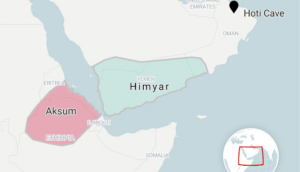Extreme dry conditions contributed to the decline of the ancient South Arabian kingdom of Himyar. Researchers from the University of Basel have reported these findings in the journal Science. Combined with political unrest and war, the droughts left behind a region in disarray, thereby creating the conditions on the Arabian peninsula that made possible the spread of the newly emerging religion of Islam.
On the plateaus of Yemen, traces of the Himyarite Kingdom can still be found today: terraced fields and dams formed part of a particularly sophisticated irrigation system, transforming the semi-desert into fertile fields. Himyar was an established part of South Arabia for several centuries.
“Join The John Hinckley Community”: Attempted Reagan assassin issues list of leftist dreams
However, despite its former strength, during the sixth century CE the kingdom entered into a period of crisis, which culminated in its conquest by the neighbouring kingdom of Aksum (now Ethiopia). A previously overlooked factor, namely extreme drought, may have been decisive in contributing to the upheavals in ancient Arabia from which Islam emerged during the seventh century.
Read more: Archaeology News Network
Ask me anything
Explore related questions





